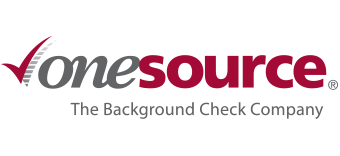One Source Ranked as an HRO Today Pre-Employment Screening Leader
One Source would like to extend our heartfelt gratitude to our clients for helping us achieve a first: ranking as an Enterprise Pre-Employment Screening Leader in the 2023 Baker’s Dozen Customer Satisfaction Ratings by HRO Today. This was only possible through feedback from our clients directly to the multi-channel network for HR decision-makers themselves. Our first accolade with the organization, we hope for the chance to exceed customer expectations moving forward.
What Is the Baker’s Dozen Award?
Each year, via an online survey, HRO Today gathers feedback from the customers of businesses in HR-related industries. Organizations are ranked in three categories to determine their standing: service breadth, deal sizes, and service quality. Service Breadth looks at the variety of available services tailored to distinctive audiences, Service Quality measures how customer expectations have been met, and Size of Deals refers to the average scope of contracts drawn up.
We’re Always Striving to Improve
As an Enterprise Pre-Employment Screening Leader, One Source is committed to providing an excellent experience from day one. We believe that the best way to begin is with a diagnosis of needs followed by:
- Clear Communication – We listen to our customers and regularly adjust our system, services, and offerings based on feedback. If delays or important compliance updates arise, clients receive notices detailing the situation alongside relevant resources and details on possible resolutions.
- Proactive Support – We’re happy to provide customers with the resources they need to hire confidently through onboarding and beyond. Plus, our support team is available by call, email, or chat whenever you need them.
- A Streamlined Experience – Our process offers a smooth and accessible experience for both clients and applicants. Between ATS/HRIS integrations, bulk order uploads, automated reminders, and more, we have the tools needed to keep candidates moving.
- Quick Turnaround Times – At One Source, accuracy is only one of our primary focuses. The other is ensuring that reports are delivered within 24 to 48 hours, allowing us to deliver the TotalCheck experience every time.
Let Us Know How We Can Help
After 20 years of providing trusted screening solutions, One Source greatly appreciates this new honor. We deeply value old and new relationships with clients, so we pledge to continue improving, listening, and learning.
For more information on how One Source goes above and beyond for our customers and their applicants, contact us.
